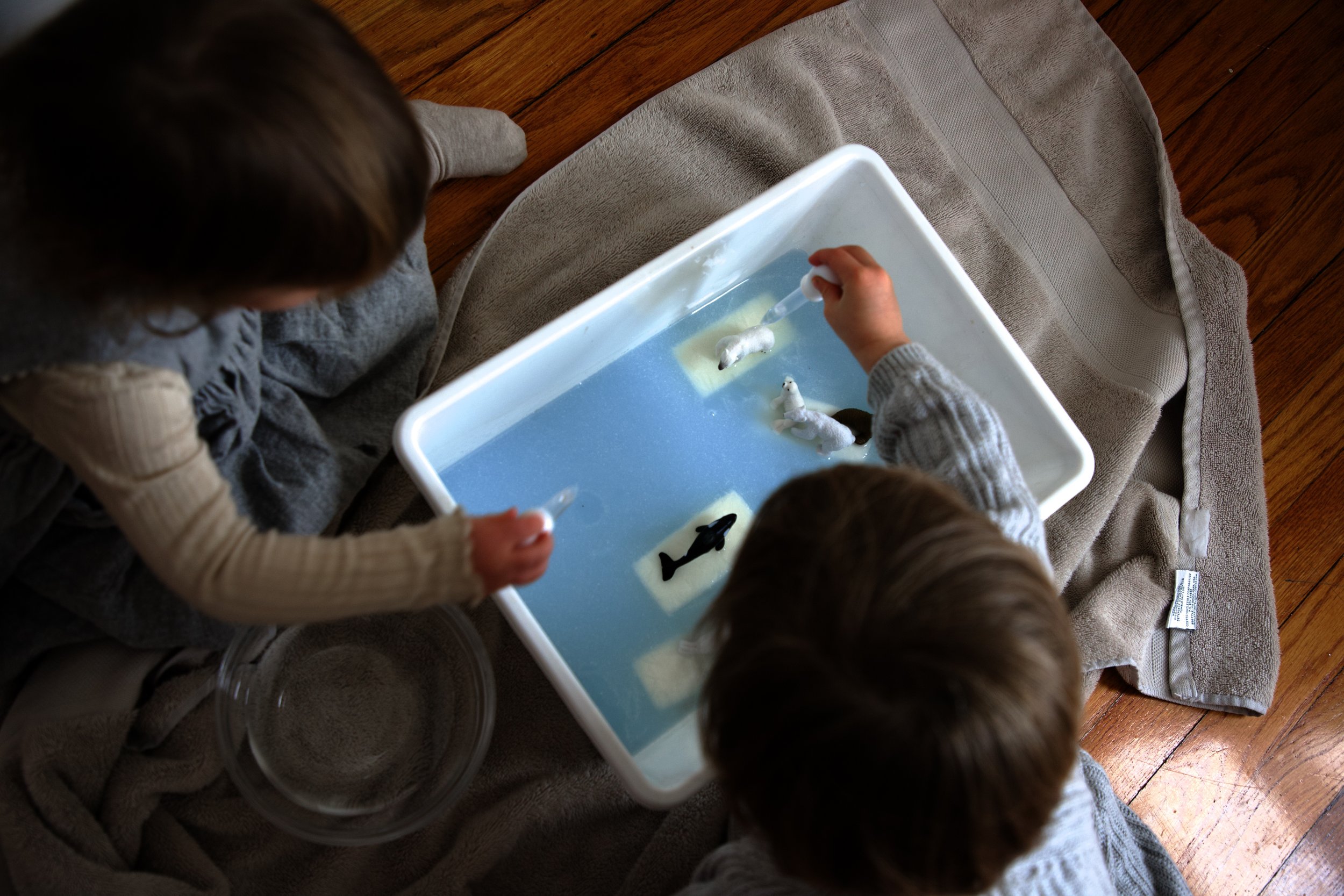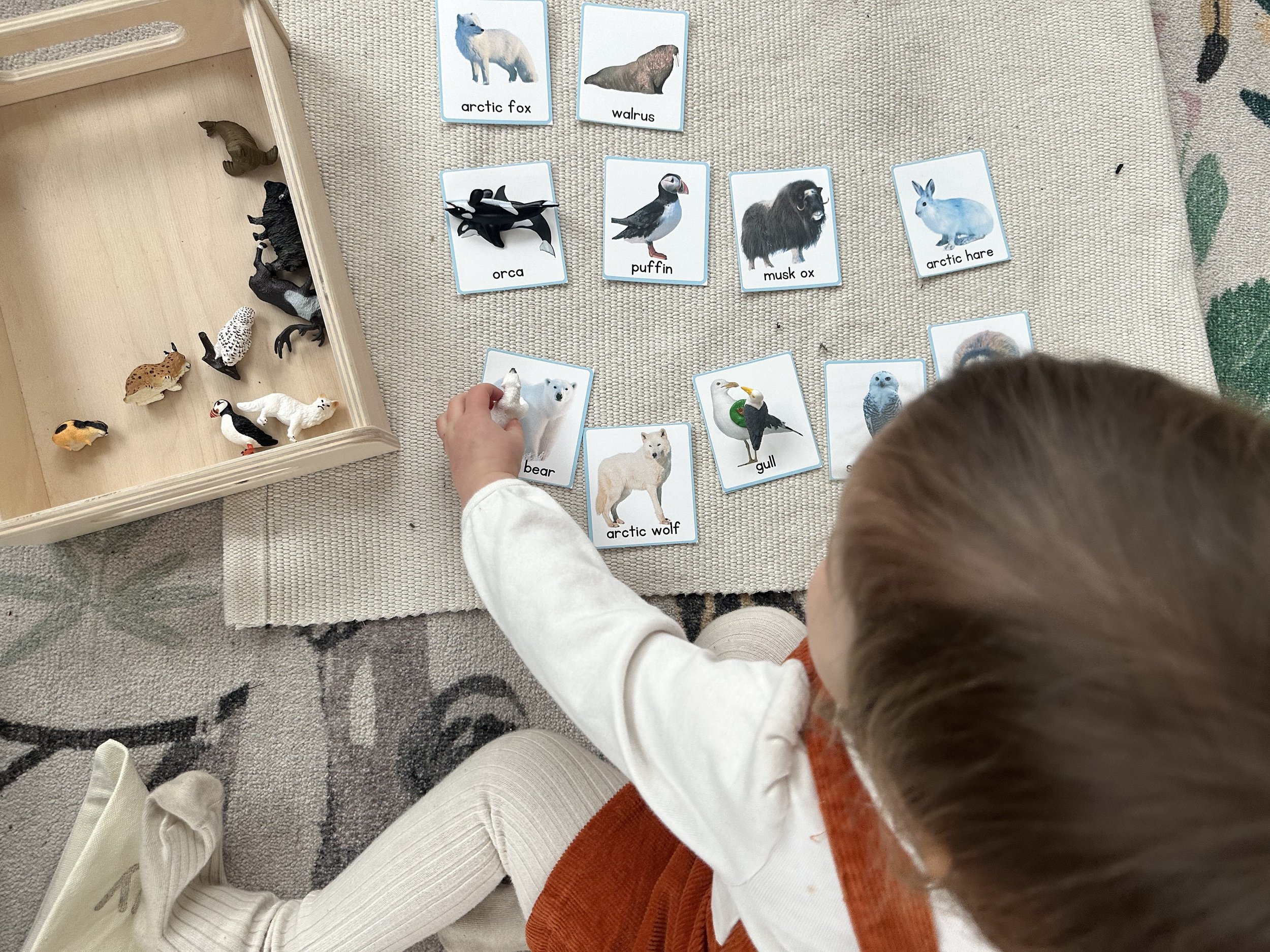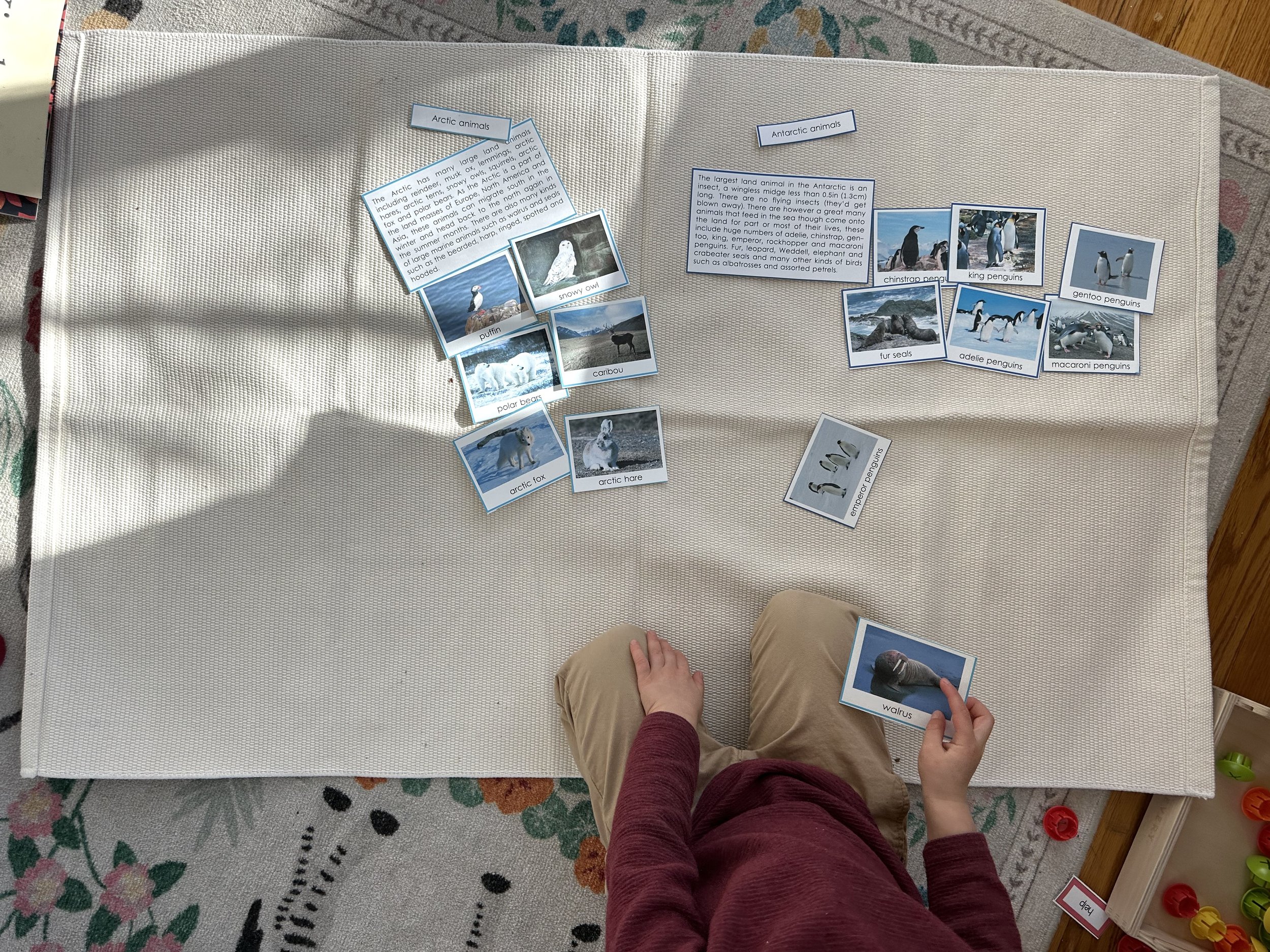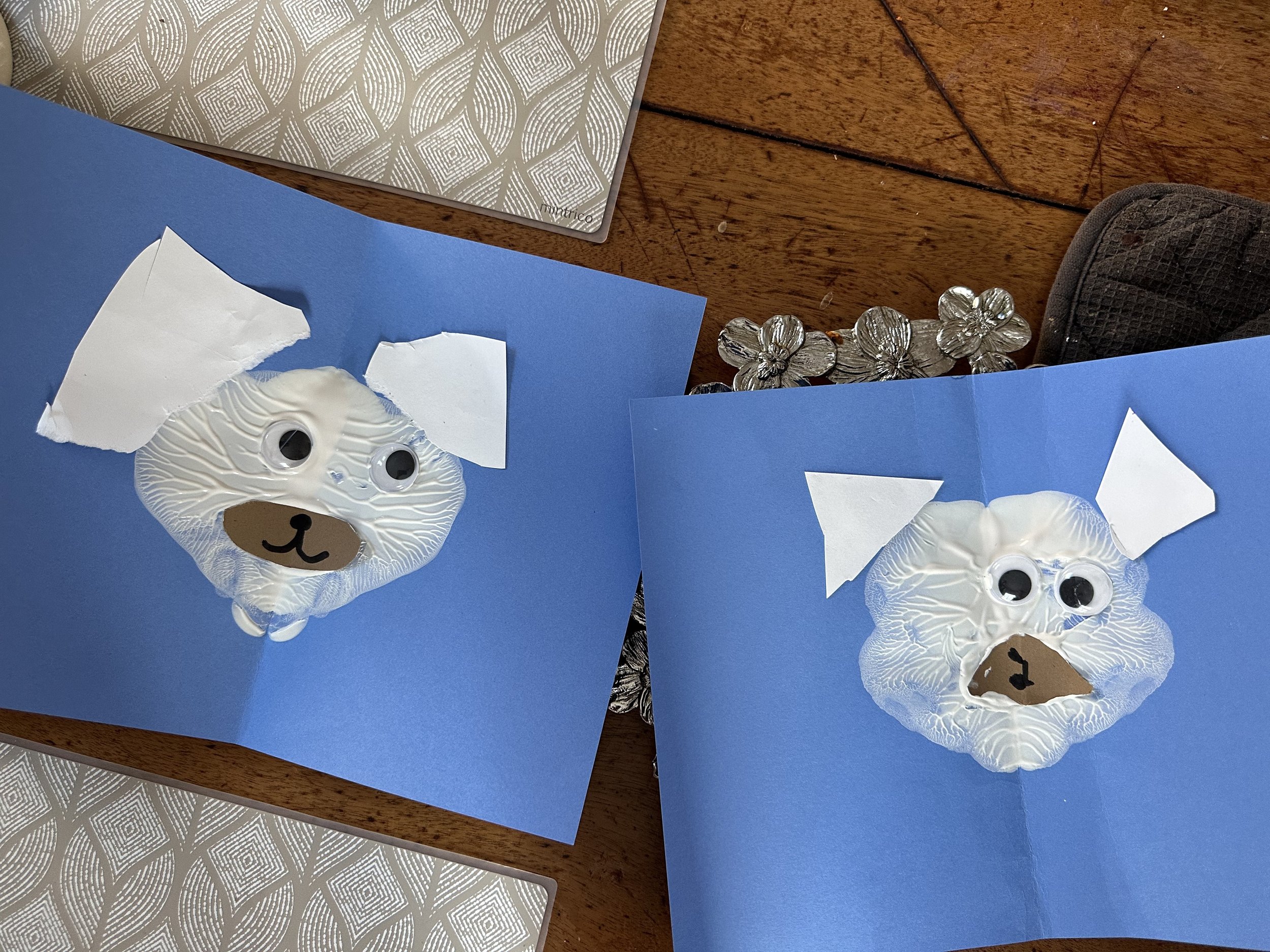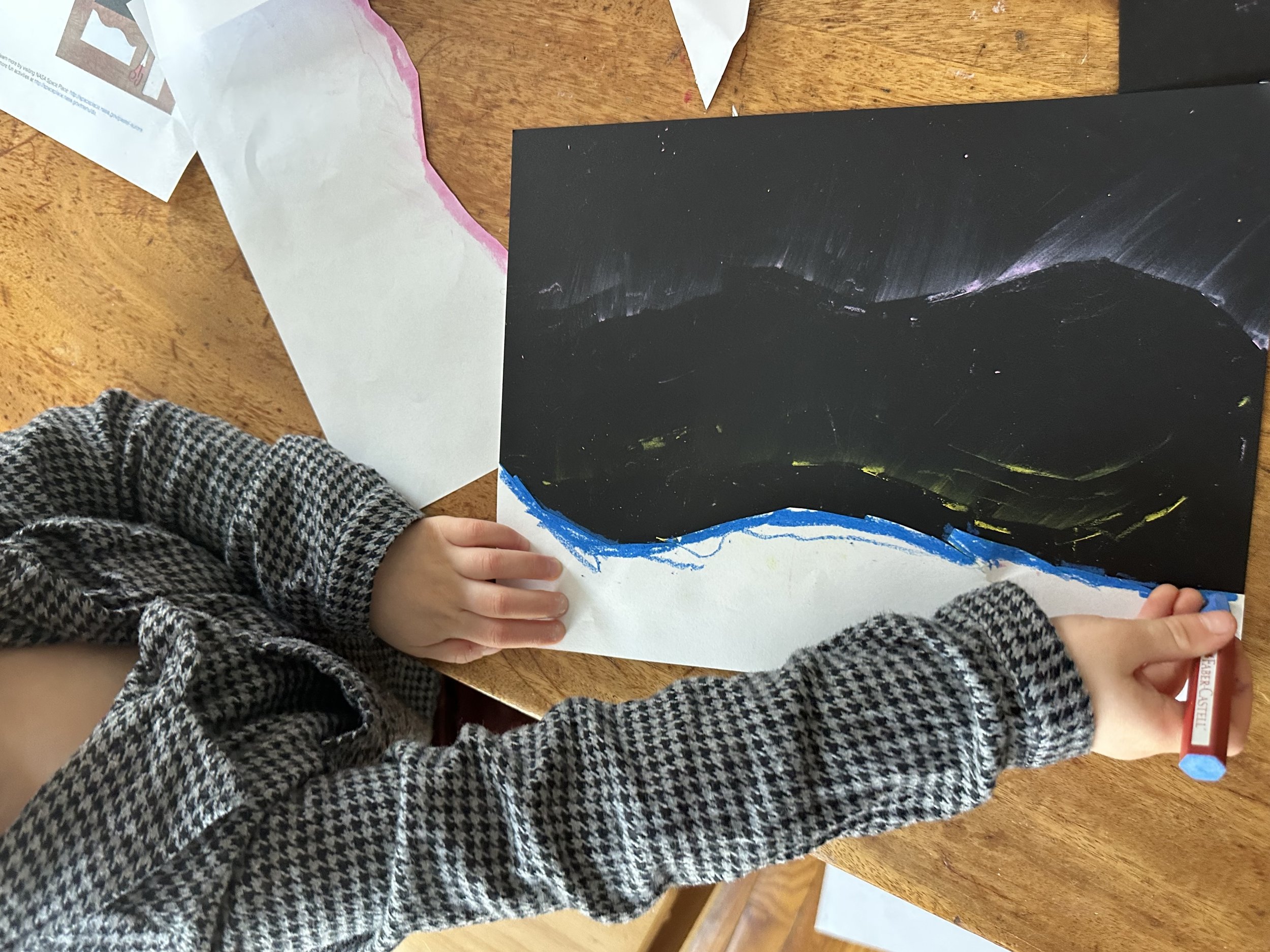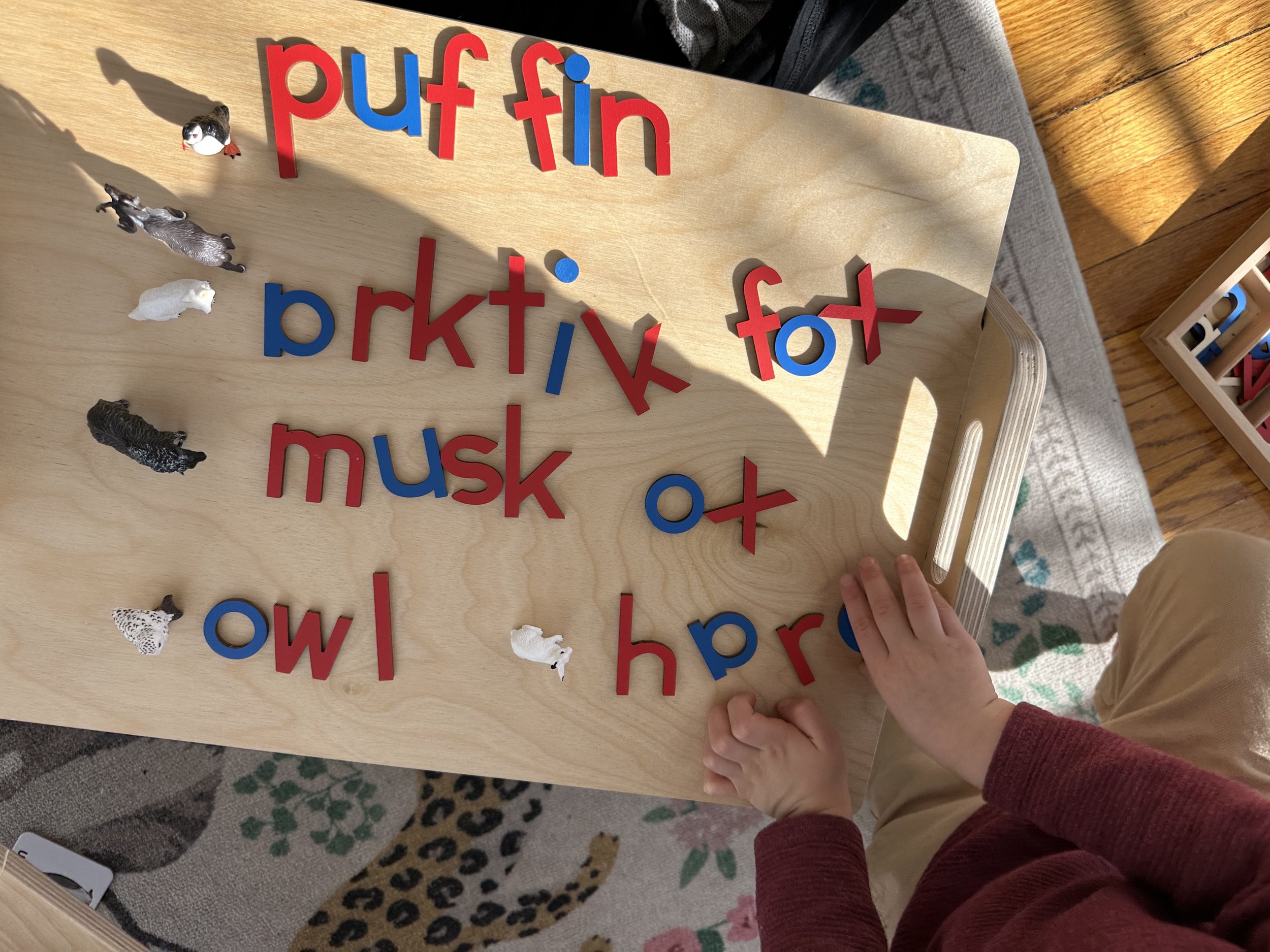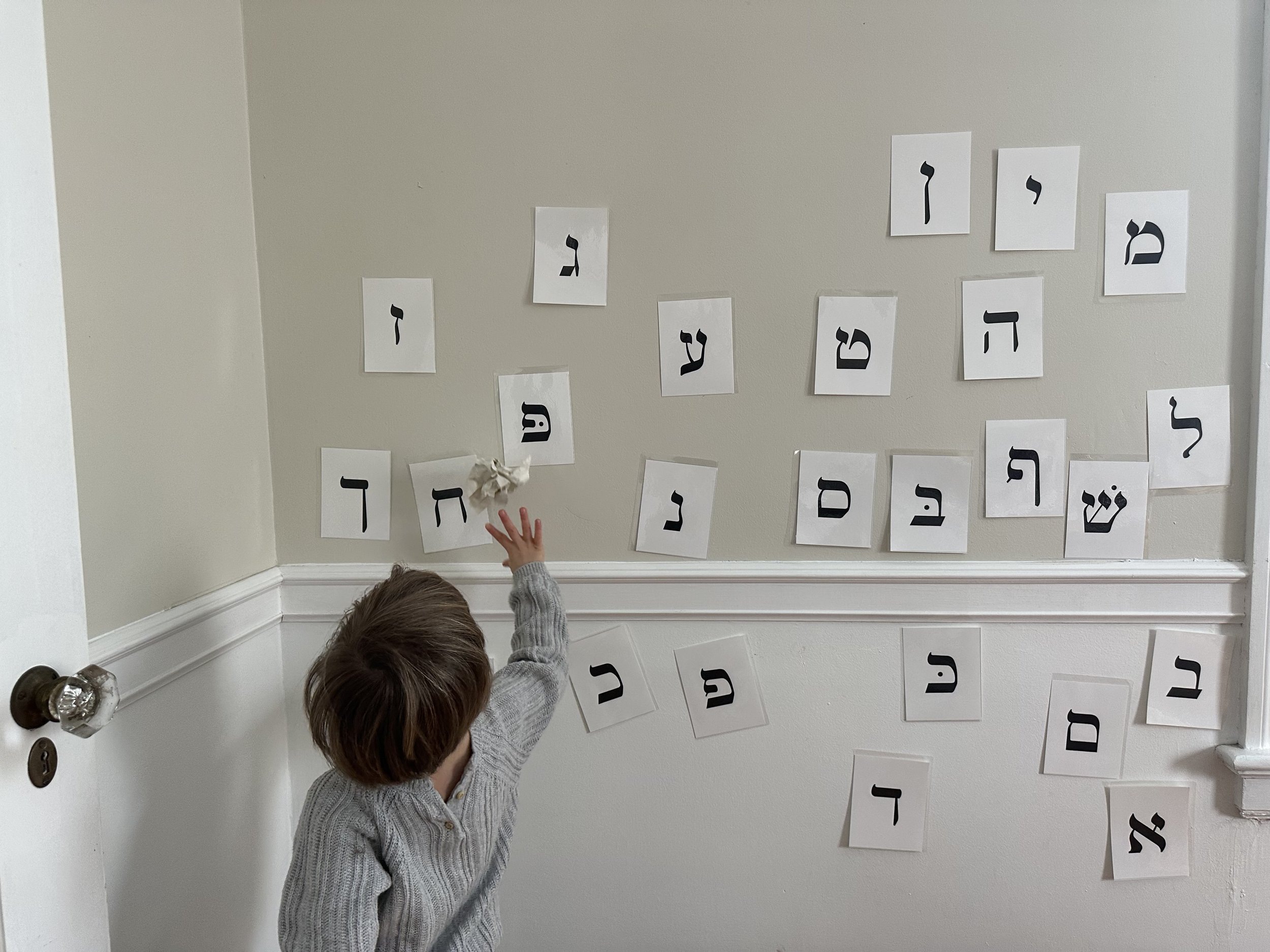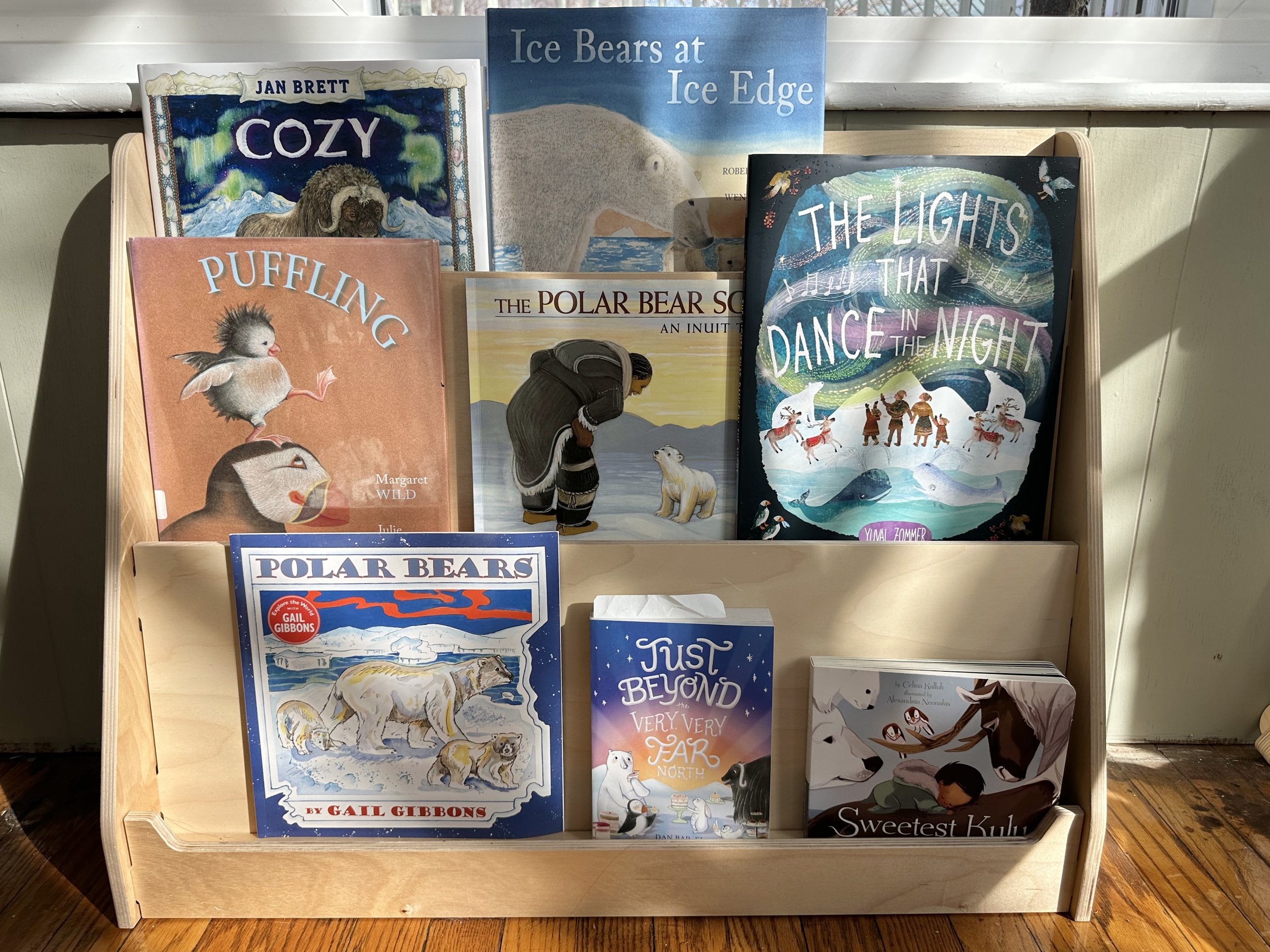Arctic Pre-K Unit Study
This post may contain affiliate links, which means I may earn a small commission if you buy through my link but does not change your price.
If you are planning an Arctic unit study I would venture to guess it is probably winter. This is a funny realization to me because while obviously Arctic animals are around all year, most of us find ourselves planning these unit studies when it is cold where we live. For us we set out on an Arctic unit study in January and February.
I love unit studies as a way to broaden background knowledge and build vocabulary. This is so helpful for reading comprehension. I also find it so fun that I learn some things myself. I always go in with some background knowledge I want to make sure my son comes away with. For example, here it was important to me my son came away knowing that penguins do not live in the Arctic. Along the way, I learned a lot more about the animals that do live there!
Much of our focus on the Arctic was on Arctic animals but we also learned about icebergs, Aurora lights, Inuit people, and the overall climate! We started out with the book The Very Far North. This chapter book provided a spine for our Arctic study and was very fun. My son connected well to the characters and we learned a slew of basic Arctic animals here. Of course, we included other books as well which I will share here.
I have both a preschooler and a toddler so I try to find activities that work for both children. Sometimes this mixed-age classroom is particularly wonderful because I set up activities more geared towards one child but the other one comes away gaining something as well. This happens both ways as I, at times, set up activities such as the picture-to-object matching below that my son would not be particularly interested in. When my daughter does it over and over, my son also gains the knowledge.
I have some general background knowledge activities below and then have sections divided up into different learning areas afterward.
Arctic Animals Picture to Object Matching
While my son is no longer engaged with this kind of work (at least for any amount of time), my daughter loves it. I reused the cards throughout for several things for both my children. The main use though was matching the small Arctic animal figurines to the cards. These figurines made many appearances throughout our unit. Both children learned a lot of Arctic animals!
Arctic Animals Snow Bin
You are certainly not following me for sensory bin ideas as I am not the sensory bin mom. That said, we got some snow so I brought some snow inside with our Arctic animal figurines. This gave my kids a chance to play with the figurines and for us to talk about the different animals. It also offered some snow play where I didn’t have to stand outside.
Iceberg Sensory Bin
Two sensory bins for one unit! Again, I kept this very simple. We talked about how polar bears and other Arctic animals rely on sea ice. I made sheets of sea ice by freezing a shallow bit of baking soda and water and a splash of cream. I put a tiny dot of blue food coloring in the water and put in all our Arctic animals. I then gave the kids eyedroppers to make a fun fine motor activity melting the ice. While they played I read them this book.
Arctic Animal What am I?
We have done these who am I matching games for a lot of our units and we always love them. We use materials from HOKA and they have these for every unit. It is a great way to incorporate some critical thinking skills and assess our content knowledge. I like to do these partway through the unit when we have gained some knowledge about the topic! I loved in this one how it required process of elimination for some of them as certain qualities were shared by multiple animals.
Arctic and Antarctic Sort
I mentioned that it was a priority for me that my son come away knowing that penguins don’t live in the Arctic. This is such a common misconception and I find penguins and polar bears are constantly put together in things for kids. Because of this this Arctic/Antarctic sort was perfect! We also learned why certain animals live in each place and learned some more animals we hadn’t covered in other parts of the unit.
Arctic-Themed Art Activities
Polar Bear Symmetry Craft
We learned about symmetry in our math curriculum during this period, so when I came across this craft I thought it would be perfect! We folded the paper in half, put a few splotches of paint on one side, then closed it. Then my son cut out little bits for ears and the nose. I helped my daughter a lot but she enjoyed pressing the paper, attempting to cut the ears, and placing on the cutouts.
Aurora Oil Pastel Craft
I came across this simple oil pastel craft from NASA of the Auroras or Northern Lights (though from this fact sheet I also learned they exist in Antarctica!). I liked that the sheet had some information about them as well. You simply trace the guide then use a paper towel to push the oil pastels up onto the sheet. It was really cool!
Auroras Science Experiment
I’m calling this activity art though it is more of a science-experiment type thing. We have done something similar before with pepper in water and salt, but the idea here was for it to look like an Aurora. Here you dab a soapy Q-tip on dots of food coloring in milk. The idea is the colors move away, creating a Northern Lights-type look. My son really enjoyed this and asked all afternoon after if we could do it again some time. I will be honest, I was a bit underwhelmed. I expected it to be a bit more dramatic and felt a bit like we just wasted milk. We may have done something wrong though. Here is the link to where we got the idea. Maybe it will work better for you. Looking back I think I needed to put bigger dots of food coloring in each spot.
Arctic-Themed Phonics Activities
Arctic Animal Phonetic Spelling
This isn’t particularly Arctic other than what he is spelling, but we like to use the movable alphabet to practice some spelling! I have not formally taught spelling but my son knows some of the spelling patterns from his reading phonics instruction. The goal here is not spelling instruction but playing with spelling words. We will cover spelling instruction for words like Arctic that are more complex later.
Iceberg Walk
This can be used to practice anything, be it letters or shapes or numbers, but I figured it fit best under phonics since letters tend to be the thing people are really working on! Since we know the alphabet fluently we are working on the Hebrew alef bet. My son now has been introduced to all the letters so we are in the fun stage of playing with the letters to practice! For our iceberg walk I played an Arctic themed playlist on Spotify. My son walked along the “icebergs” and when the music stopped, he froze. He then called out the letter he was on and picked it up. We continued until all the letters were picked up. My idea had been for him to jump between the letters without touching the floor as the letters were picked up, but I could tell that wasn’t going to appeal to him as we began so I dropped that idea and he just walked in a circle!
Snowball Throw
This is more winter/snow-themed than strictly Arctic but I still included it here. We used our Hebrew letters to throw “snowballs” (a crumpled up piece of paper). I would call out a letter and he would throw a snowball at it. Then we switched to him throwing at a letter and calling it out. You can do this with anything you are working on. I set it up for my daughter with shapes, for example. It is great for alphabet learning though!
Arctic-Themed Children’s Books
Children’s books are always a key part of our unit studies. This time there were so many options and I was constantly feeling like there were more I wanted to purchase! Some units I really go all in and buy them all but I am trying to be a little more controlled on that right now. That said, we had a good selection that provided a nice backbone for our unit study.
The Very Far North: This chapter book was a large part of our unit study. It introduced my son to many of the animals that reside in the very far north. There is a polar bear, a puffin, a musk ox, an arctic hare, an arctic fox, a snowy owl, and more. This is the exact sort of living book I love as a part of a unit study. It is more of an elementary level book but my preschooler enjoyed it. This also allowed him to make connections with other books we read. For example, there is talk of how the puffin doesn’t like gulls. We learned through other books why that is and it is one of the memorable facts my son learned through this unit. He asked to read the second in the series after.
Ice Bears at Ice Edge: This is a beautiful book about polar bears. The illustrations are incredible and I used it to discuss the importance of sea ice for polar bears.
Polar Bears: I love Gail Gibbons books for nonfiction that feels alive! This book is beautifully illustrated with real information about polar bears. I learned a lot and so did my son. It has information about the food chain which I find hard to discuss with my son, but of course that is part of the reality of the world.
Cozy: We love Jan Brett. This book is about a musk ox and is a gorgeous look at animals in the Arctic. We also love Cozy in Love, another book about the same musk ox. These books give some great science facts, such as about how musk oxen compete or the special name of musk ox fur, while being gorgeous and engaging living books.
Sweetest Kulu: This is a wonderful book for babies, toddlers, and preschoolers. It is a little love poem to a child, featuring Arctic animals and giving a little glimpse into Inuit life.
The Polar Bear Son: This is a beautiful book telling a traditional Inuit story. I used this as part of a day we spent discussing the Inuit people.
The Lights That Dance at Night: This is a gorgeous gorgeous book about the Auroras or Northern Lights. The illustrations are wonderful, the poetry is beautiful. I highly recommend this one! It has some basic information about Auroras that can be taught further. We paired it with an Aurora art project where we learned some facts about Auroras.
Puffling: This is a sweet book about a baby puffin, hatching and growing up to independence.
Baby Beluga: I love this song and love this book. Belugas are one of the animals in the Arctic. This book is a great introduction for the youngest children but is still enjoyable to my preschooler.

